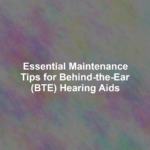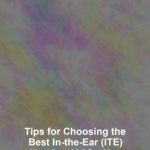Recognising the Risks Associated with Headphone Use
For billions of individuals across the globe, indulging in music, podcasts, or audiobooks through headphones is a cherished daily routine. Yet, many users remain blissfully unaware of the serious risks linked to this pleasurable habit. The dangers of headphone use include a range of potential auditory impairments that may develop subtly and silently over time. These conditions can vary from temporary <a href=”https://www.earwaxremoval.net/daily-habits-for-preventing-tinnitus-key-tips-to-follow/”>tinnitus</a> to more severe, irreversible hearing loss. Recognising and understanding these risks serve as the essential first step towards protecting your ears from headphone damage and ensuring your long-term auditory wellbeing.
Diving Deeper into Various Forms of Hearing Damage

Prolonged exposure to loud audio through headphones can lead to various forms of hearing damage. A prevalent issue is the temporary threshold shift, where the ears may feel muffled following extended exposure to high volumes, signalling potential auditory harm. Should this pattern continue, it may progress to a permanent threshold shift, resulting in irreversible hearing impairment. Studies have demonstrated that the auditory system is vulnerable to noise-induced hearing loss (NIHL), which pertains to damage inflicted on the delicate hair cells situated within the cochlea. These minute yet vital cells are essential for converting sound waves into electrical signals for the brain to process. Over time, habitual exposure to loud music can deactivate these cells, leading to permanent auditory damage. Understanding these forms of hearing impairment is crucial for those who regularly use headphones, as early intervention can effectively reduce the risk of further damage.
Examining the Impact of Volume Levels on Auditory Health
The volume at which you listen to audio significantly influences your overall hearing health. The World Health Organization (WHO) firmly recommends maintaining volume levels below 85 decibels (dB) to help mitigate the risk of hearing loss. Listening at volumes that exceed this threshold can endanger your auditory system. Many individuals fall into the habit of increasing their volume to drown out background noise, particularly in bustling urban environments or crowded public transport. This tendency can markedly heighten the risk of auditory damage. It’s essential to understand that even brief episodes of high volume can trigger acoustic trauma, resulting in lasting damage. By comprehending how volume levels affect your hearing, you can take proactive steps to protect your ears.
Spotting the Warning Signs of Auditory Damage
Recognising the signs of ear damage is crucial for effective prevention. Symptoms such as persistent ringing in the ears, challenges in engaging in conversations, or a feeling of fullness in the ears should not be overlooked. These indicators often signify that your hearing health is in jeopardy. The sooner you detect these symptoms, the greater your chances of reversing any potential damage. If you notice ongoing tinnitus or a sensation of muffled sounds, it’s imperative to heed these warning signs and reconsider your headphone usage habits. Seeking advice from an audiologist can provide valuable insights and recommendations for your next steps in safeguarding your hearing.
Adopting Safe Listening Habits for Headphone Users

Implementing safe listening practices is vital for those who frequently use headphones. The 60/60 rule is a well-known guideline: keep your volume set to no more than 60% of its maximum capacity and limit listening sessions to no more than 60 minutes at a time. This guideline aids in mitigating the risks associated with prolonged exposure to high sound levels. Additionally, taking regular breaks is critical. Each hour, make it a habit to step away from your headphones for at least five to ten minutes. This simple practice allows your ears to recover and decreases the risk of damage. Furthermore, cultivating the habit of using applications to monitor volume levels can enhance your listening experience while providing further protection for your hearing. With a few mindful adjustments, you can enjoy your audio content without compromising your ear health.
Understanding the Long-term Consequences of Frequent Headphone Use
The long-term effects of consistent headphone usage can be concerning. Research indicates that a significant percentage of young adults are experiencing hearing loss at an earlier age than previous generations, primarily due to the widespread use of headphones and earbuds. Chronic exposure to loud sounds can not only lead to hearing impairment but also contribute to feelings of social isolation, anxiety, and depression as communication becomes more challenging. Additionally, emerging studies suggest a link between hearing damage and cognitive decline. The brain’s ability to process sound can deteriorate, causing difficulties in understanding speech amidst background noise. Recognising these long-term implications should motivate users to adopt proactive strategies for preventing ear damage from headphones and prioritising their auditory health.
Making Empowered Choices When Selecting Headphones
Choosing the right headphones is essential for enhancing your listening experience while also protecting your hearing. With a plethora of options available, it’s crucial to comprehend how various features can impact both your audio enjoyment and ear safety.
The Advantages of Noise-Cancelling Headphones

Noise-cancelling headphones have surged in popularity due to their ability to create an immersive listening experience. By effectively minimising external noise, these headphones allow you to enjoy your music at lower volumes, which is crucial for preventing ear damage from headphones. This feature is especially beneficial for individuals who frequently listen to audio in noisy environments such as cafés, airplanes, or public transportation. Moreover, active noise cancellation technology utilises microphones to detect ambient sounds, generating opposing sound waves that neutralise them. This innovative technology not only protects your hearing but also improves sound quality, allowing for a richer auditory experience. Therefore, investing in high-quality noise-cancelling headphones can be a prudent decision for preserving your auditory health while savouring your favourite tunes.
Comparing Over-Ear and In-Ear Headphone Types
When choosing between over-ear and in-ear headphone types, it is essential to consider safety and sound isolation as primary elements. Over-ear headphones envelop the ears, providing superior sound isolation, which reduces the necessity to increase volume. This design is particularly advantageous for extended listening sessions, as it alleviates strain on your auditory system. Conversely, in-ear models are compact and portable, but they may occasionally create a misleading sense of heightened volume, encouraging users to listen at elevated levels. Understanding the differences between these headphone types empowers you to make informed decisions that align with your lifestyle while putting your ear health first.
Assessing Headphone Quality and Safety Standards
Not all headphones are created equal, especially regarding sound quality and safety features. Seek headphones that comply with recognised safety standards, such as those established by the American National Standards Institute (ANSI) or the International Electrotechnical Commission (IEC). High-quality headphones typically incorporate superior materials and engineering, which enhance sound fidelity while reducing distortion. As sound quality improves, users are less likely to turn up their music to harmful levels. Furthermore, reputable brands often conduct thorough testing, ensuring their products are not only enjoyable but also safe for prolonged use. Prioritising quality over price represents an investment in both your auditory health and overall audio experience.
Evaluating the Pros and Cons of Wireless versus Wired Headphones
The ongoing debate surrounding wireless and wired headphones involves considerations of convenience, sound quality, and safety. Wireless headphones offer the freedom to move while enjoying audio, eliminating the inconvenience of tangled wires; however, they may sometimes compromise sound quality, particularly if the Bluetooth connection is unstable. In contrast, wired headphones often provide superior sound fidelity. Regardless of your choice, it is crucial to ensure that whichever option you select allows you to maintain safe listening levels. Additionally, consider battery life and potential Bluetooth interference when opting for wireless models. Ultimately, the right choice hinges on personal preferences, but either option can meet your audio needs while prioritising your hearing health.
Integrating Safe Listening Practices into Your Daily Life
In an era where audio content is readily accessible, adopting safe listening habits is more important than ever. The simple changes you make today can protect your hearing for years to come.
Applying the 60/60 Rule for Safer Listening
The 60/60 rule serves as a helpful guideline for promoting safe headphone use. Listening at no more than 60% of your device’s maximum volume for no longer than 60 minutes at a time can significantly decrease the risk of hearing damage. Numerous studies have illustrated that prolonged exposure to elevated volumes can lead to irreversible hearing impairment. By following this rule, you can create a safer listening experience without sacrificing enjoyment. Using timers or applications that remind you to take breaks can effectively reinforce this habit. This guideline is straightforward yet impactful, encouraging healthy listening practices while allowing you to enjoy your favourite audio content.
Prioritising Regular Breaks During Listening Sessions
Incorporating regular breaks into your listening routine is vital for maintaining ear health. Continuous exposure to sound, even at safe levels, can lead to auditory fatigue and stress on the hearing system. Aim to take breaks every hour, stepping away from your headphones for at least five to ten minutes. During these breaks, engage in quiet activities or simply savour the silence, allowing your ears to recuperate. This practice not only helps preserve your hearing health but can also enhance your appreciation of sound, making each listening session more enjoyable. By prioritising breaks, you invest in your auditory wellbeing and establish a foundation for a more gratifying audio experience.
Monitoring Your Headphone Volume for Enhanced Hearing Protection
Being mindful of your volume levels can significantly contribute to avoiding ear damage from headphones. Many smartphones and music players now come with built-in features or applications designed to monitor and limit volume levels. By utilising these tools, you can ensure that your listening habits remain within safe parameters. Additionally, some headphones are equipped with built-in volume limiters, preventing you from unintentionally raising the sound too high. Regularly checking your volume settings can develop into a helpful habit, improving your awareness of your listening environment. By being proactive about your volume management, you can safeguard your hearing and maintain a lasting relationship with your favourite audio content.
The Advantages of Using Noise-Cancelling Headphones
Opting for noise-cancelling headphones can revolutionise your listening experience. By effectively blocking out external noise, these headphones enable you to enjoy your audio at lower volumes, which is vital for preventing ear damage from headphones. This feature is particularly beneficial in settings where background noise may tempt users to increase their volume to unsafe levels. Furthermore, many noise-cancelling models provide exceptional sound quality, allowing users to appreciate every detail of their audio without the need for excessive volume. Investing in high-quality noise-cancelling headphones not only enriches your listening experience but also actively protects your ears from potential harm.
Implementing Protective Strategies for Ear Health
Protecting your ears involves more than just selecting the right headphones. Adopting additional protective measures can further enhance your auditory health while enjoying your favourite audio.
Using Earplugs in Noisy Environments
In situations where exposure to loud environments is unavoidable, using earplugs can provide an extra layer of protection while using headphones. Earplugs can significantly minimise ambient noise, allowing you to listen at safer volumes without compromising audio quality. Many musicians and concert-goers opt for high-fidelity earplugs, which maintain sound quality while blocking harmful noise levels. This straightforward yet effective solution serves as a protective barrier against overwhelming sounds encountered at concerts, clubs, or even busy streets. By proactively incorporating earplugs into your listening routine, you can combat noise-induced hearing loss while still enjoying your favourite music.
Scheduling Regular Hearing Assessments for Proactive Care
Scheduling regular hearing evaluations is a vital aspect of maintaining your auditory health. Audiologists can conduct comprehensive assessments and monitor any changes in your hearing over time. Early detection of hearing loss is crucial for implementing timely interventions, which can potentially reverse or slow down any damage. Unfortunately, many individuals neglect their auditory health until significant impairment occurs, making regular check-ups an often-overlooked component of personal wellness. Taking the initiative to prioritise your hearing health by consulting with professionals can help you stay informed and protect your ears from potential harm.
Maintaining Proper Ear Hygiene for Optimal Health
Ensuring good ear hygiene is essential for preventing infections and other issues that could jeopardise your hearing health. Regularly clean your headphones to prevent bacterial accumulation, which can lead to ear infections. Furthermore, avoid inserting objects into your ears, as this can cause injury or push wax deeper into the ear canal. Instead, gently clean the outer ear with a damp cloth and consult a professional for any concerns regarding earwax build-up. By prioritising ear hygiene, you not only safeguard your hearing but also enhance your overall listening experience.
Promoting Awareness of Safe Listening Practices
Advocating for safe listening practices is not solely about your own health; it’s about raising awareness and educating those around you. By sharing knowledge and resources, you can contribute to a community that values auditory health.
Instructing Family Members on Safe Listening Habits
Educating family members about the importance of safe listening practices can foster a culture of awareness and responsibility. Begin by discussing the risks associated with loud headphone use and the advantages of adhering to the 60/60 rule. Encourage family members to monitor their listening habits and share tools that can assist in maintaining safe volume levels. Establishing a family agreement to prioritise hearing health can strengthen relationships while promoting a commitment to wellbeing. When everyone comprehends the risks and benefits, the collective effort can lead to improved ear health for all family members.
Raising Awareness Among Friends and Colleagues
Spreading awareness among friends and colleagues can amplify the impact of safe listening practices. Share articles, resources, or even personal stories that underscore the significance of protecting hearing health. Organise discussions about headphone safety during social gatherings or work meetings, fostering open dialogues about listening habits. By cultivating a supportive environment where everyone feels comfortable sharing their audio experiences, you can collectively prioritise hearing health and inspire positive changes in listening behaviours.
Engaging Younger Listeners in Discussions About Hearing Health
Educating young individuals about the dangers associated with loud headphone use is crucial for nurturing a generation that values hearing health. Use relatable examples, such as popular music or gaming experiences, to convey the importance of safe listening practices. Encourage them to adopt the 60/60 rule and introduce enjoyable applications or games that promote healthy listening habits. Involving young listeners in discussions about ear health can empower them to make informed choices, ultimately leading to a healthier audio experience in their daily lives.
Utilising Technology for Safer Listening
As technology advances, innovative solutions for safe listening are emerging. Staying informed about these developments can help you make better choices for your auditory health.
Leveraging Volume Limiting Features for Enhanced Hearing Protection
Utilising devices and applications that automatically restrict volume to safe levels is an effective strategy for avoiding ear damage from headphones. Many smartphones and music streaming platforms now include volume-limiting features. By enabling these settings, you can ensure that your listening habits remain within safe parameters, significantly reducing the risk of hearing loss. Some headphones also come equipped with built-in volume limiters, making it easier to adhere to healthy listening levels. Embracing technology that prioritises your hearing health is a proactive step towards creating a safer audio experience.
Connecting Audio Quality to Ear Health
Understanding how improved sound quality can lessen the need for higher volumes is crucial for protecting your ears. High-quality headphones typically produce clearer and more nuanced sound, allowing you to appreciate music as the artist intended. With enhanced sound fidelity, users are less likely to increase the volume to compensate for inferior audio quality. Investing in superior headphones not only elevates your listening experience but also plays a significant role in safeguarding your hearing health. Prioritising quality audio can lead to safer listening habits, enabling you to enjoy your favourite content without risking damage.
Future Innovations in Headphone Safety Technologies
Staying informed about new technologies designed to protect hearing can provide you with an edge in practising safe listening. Innovations such as smart headphones that monitor your environment and adjust volume levels accordingly are on the horizon. Additionally, ongoing research into bone conduction headphones shows promise for reducing traditional auditory strain while providing a unique listening experience. Being aware of these advancements can empower you to make informed choices regarding your hearing health. As technology continues to evolve, adopting innovations that prioritise safety will be vital in avoiding ear damage from headphones.
Making Lifestyle Changes for Improved Hearing Health
Implementing lifestyle modifications can significantly enhance your overall hearing health, complementing your headphone habits. Simple changes can lead to lasting improvements in your auditory wellbeing.
Strategies for Reducing Overall Noise Exposure
Minimising exposure to loud environments is a key strategy for protecting your hearing. Whether it’s avoiding noisy clubs, loud concerts, or even mowing the lawn without ear protection, being mindful of your surroundings can create a significant impact. When you must participate in noisy activities, consider using earplugs or noise-cancelling headphones to lessen the effect. Cultivating the habit of assessing environments for potential noise hazards will assist you in prioritising your ear health and making informed decisions about your exposure.
Incorporating Quiet Moments into Your Daily Life
Scheduling time for quiet activities is essential for allowing your ears to rest from constant stimulation. Whether it’s practising mindfulness, reading a book, or simply enjoying moments of silence, integrating quiet time into your daily routine can help your ears rejuvenate. It’s easy to overlook the importance of downtime in a fast-paced world filled with noise. By prioritising quiet moments, you not only benefit your hearing health but also enhance your overall wellbeing. Consider setting aside regular quiet breaks throughout your day to give your auditory system the opportunity to recover.
Balancing Headphone Use with Other Engaging Activities
Diversifying your activities can lessen your reliance on headphones and promote a more balanced lifestyle. Engage in outdoor activities, sports, or social gatherings that don’t revolve around audio consumption. By enriching your life with experiences that do not require headphones, you allow for natural auditory rest and maintain a healthier relationship with sound. Additionally, exploring new hobbies or interests can enhance your overall quality of life while actively contributing to your ear health.
Frequently Asked Questions About Headphone Safety
What are the primary risks associated with headphone usage?
The main risks include temporary or permanent hearing loss, tinnitus, and auditory fatigue. Prolonged exposure to loud volumes can damage the hair cells in the cochlea, leading to irreversible hearing impairment.
How can I determine if my headphones are too loud?
If you find it challenging to hear someone speaking next to you while wearing headphones or if you experience ringing in your ears after use, your volume is likely excessive.
What does the 60/60 rule entail?
The 60/60 rule recommends listening to music at no more than 60% of your device’s maximum volume for no longer than 60 minutes at a time to protect your hearing.
Are noise-cancelling headphones considered safe?
Yes, noise-cancelling headphones can be safe as they reduce the need to increase volume in noisy environments, thereby helping to safeguard your hearing.
How often should I take breaks from my headphones?
It’s advisable to take a break every hour for at least five to ten minutes to allow your ears to rest and recover.
What steps can I take to prevent ear infections while using headphones?
Maintain cleanliness of your headphones, avoid sharing them, and ensure your ears remain dry and clean to prevent infections.
How can I effectively monitor my headphone volume?
You can utilise built-in volume limit settings on your device or download applications that assist you in monitoring and limiting your headphone volume.
Do earplugs provide real benefits when using headphones?
Yes, earplugs can offer additional protection in loud environments, enabling you to listen at lower volumes without compromising your enjoyment.
What should I do if I suspect I have hearing damage?
If you suspect hearing damage, consult an audiologist for a comprehensive evaluation and guidance on how to protect your hearing moving forward.
How can I educate others about safe headphone use?
Share information regarding safe listening practices with family and friends, engage in discussions, and utilise social media to promote awareness about hearing health.
Explore our world on X!
The post Safe Listening Tips to Avoid Ear Damage From Headphones appeared first on The Microsuction Ear Wax Removal Network.
The post Safe Listening Tips to Avoid Ear Damage From Headphones appeared first on Healthcare Marketing Service.









